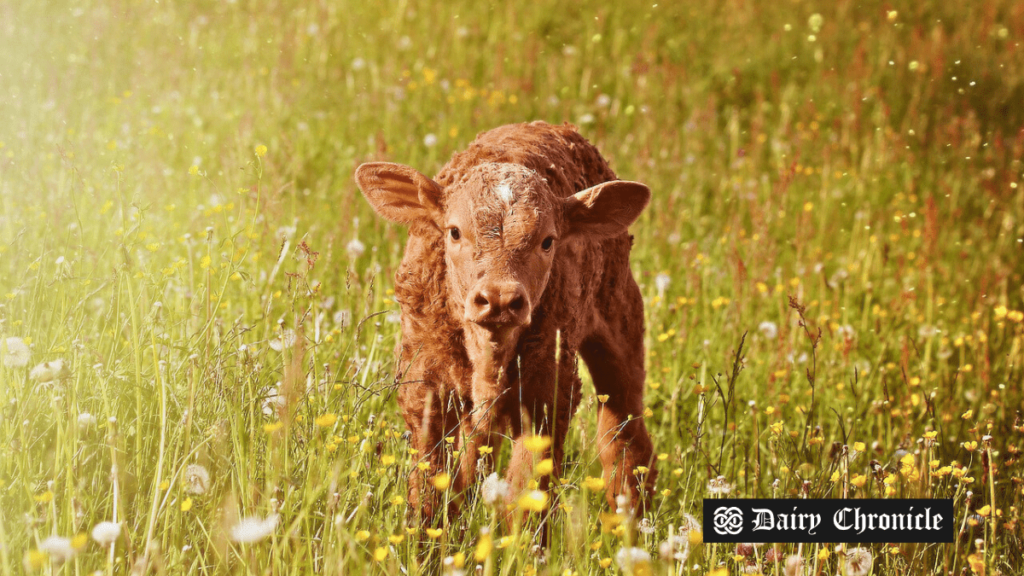Ensuring the well-being of calves in the U.S. dairy industry involves more than health and productivity; it encompasses enrichment practices that enhance their lives. Dr. Jennifer Van Os from the University of Wisconsin-Madison identifies five key enrichment areas: sensory, social, nutritional, occupational, and physical. These practices not only improve calf welfare but also strengthen public perception of the dairy industry, yielding benefits such as better health and reproduction outcomes. Investing in calf enrichment is essential for promoting ethical farming practices and ensuring long-term sustainability in dairy farming.
Ensuring the well-being of calves in the United States extends beyond merely maintaining their health and productivity. According to Dr. Jennifer Van Os, Assistant Professor and Extension Specialist in Animal Welfare at the University of Wisconsin-Madison, dairy and calf managers have a crucial opportunity to enhance the lives of calves significantly. This commitment not only benefits the animals but also strengthens the overall perception of the dairy industry.
Key Areas of Calf Enrichment
Dr. Van Os identifies five essential areas of enrichment that can enhance calf welfare, each addressing specific needs:
- Sensory Enrichment
- Example: Brushes for grooming are a primary form of sensory enrichment. They cater to the natural grooming behaviors of cattle, providing physical comfort and stimulation.
- Benefits: Studies have shown that when cows, heifers, and calves have access to grooming tools, they display reduced stress and increased overall happiness. Even simple, non-automated brushes like broom heads or deck scrubbers can significantly impact calves’ well-being.
- Social Enrichment
- Example: Housing calves in pairs or small groups fosters natural social interactions.
- Benefits: Extensive research indicates that socially housed calves exhibit greater resilience to stressors such as weaning. They display improved behavioral flexibility, higher solid feed intake, and enhanced average daily weight gain. Furthermore, group housing offers protection against cold stress, making it a vital aspect of calf management.
- Nutritional Enrichment
- Example: Feeding through nipples or innovative devices such as the “Braden” bottle, which dispenses starter grain via nipples.
- Benefits: Calves have a strong instinct to suckle, which can be satisfied through various feeding methods. Using nipples—whether through bottles, pails, or autofeeders—allows calves to engage in natural behaviors while ensuring they receive adequate nutrition. This approach not only enhances their feeding experience but also promotes healthier eating habits.
- Occupational Enrichment
- Example: Providing toys or nutritional distractions like hay can keep calves engaged.
- Benefits: Occupational enrichment encourages physical activity and mental engagement. For instance, hay provides both nutritional value and an opportunity for calves to forage, mimicking natural behaviors. Additionally, incorporating exercise space allows calves to move freely, which is essential for their physical and mental development.
- Physical Enrichment
- Example: Offering private spaces for rest and recovery, particularly during calving or after stressful events like disbudding.
- Benefits: Research indicates that cows seek isolation when they are calving or feeling overstimulated. Providing these private spaces can help calves cope with stress and recover from painful experiences more effectively.
Importance of Functional Enrichment
Dr. Van Os emphasizes that enrichments must serve a functional purpose and be actively utilized by the animals. Simply introducing objects or toys into a calf pen does not guarantee they will be beneficial. She warns against the tendency to “anthropomorphize” cattle, which can lead to misguided attempts at enrichment. For instance, while sunbathing may be enjoyable for humans, research shows it can lead to heat stress in cattle.
The Value of Enrichment for the U.S. Dairy Industry
While enrichment practices may not be legally mandated in the U.S., they offer dairy managers a unique opportunity for innovation. Managers are encouraged to experiment with various low-cost methods to enhance calf welfare. Dr. Van Os advises that these initiatives should be approached positively, focusing on the benefits rather than viewing them as obligations.
Benefits Beyond Welfare
Investing in calf enrichment can yield substantial production benefits, including:
- Improved Health: Reduced stress levels can lead to lower incidences of illness.
- Stronger Immunity: Calves that experience less stress typically have enhanced immune responses.
- Better Reproduction: Healthier, happier calves are likely to develop into more productive adults, leading to better reproductive outcomes.
Dr. Van Os highlights that showcasing care for animal welfare can improve public perception of the dairy industry. “If we can showcase doing nice things for the animals, it improves public perception,” she notes. This enhanced perception can play a significant role in combating criticisms of animal agriculture and fostering consumer trust.
Investing in calf enrichment is a proactive strategy for dairy and calf managers in the U.S. that promotes both animal welfare and long-term industry sustainability. By ensuring calves live fulfilling lives, dairy producers can effectively communicate their commitment to ethical farming practices, improving public perception and strengthening the industry’s social license to operate. The pursuit of enhanced calf well-being is not just a moral imperative; it is an investment in the future of dairy farming in the country.



